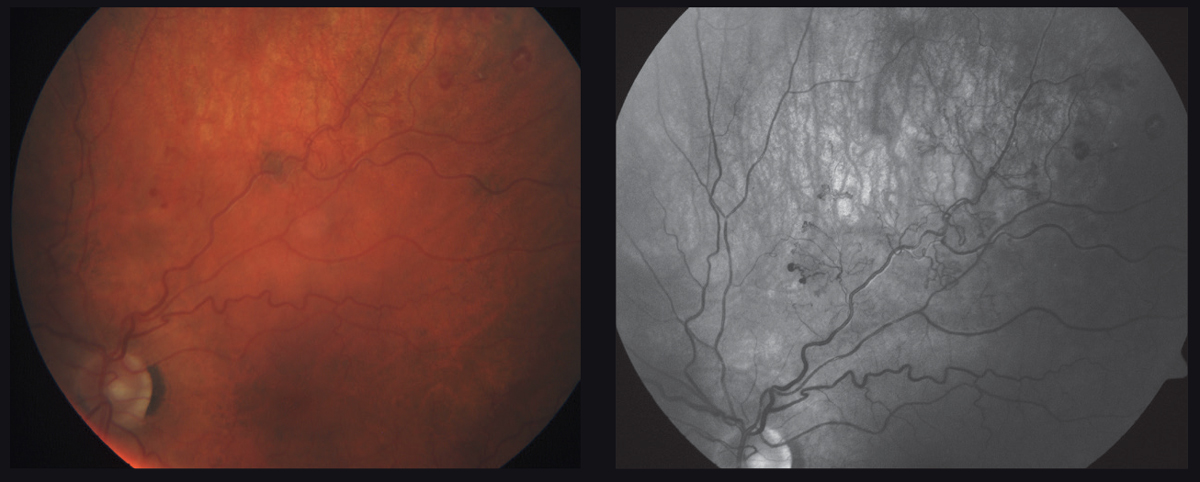 |
| Treatment and outcomes of BRVO were the same across all races included in the study. Photo: Carrie Ho, OD. Click image to enlarge. |
The prevalence of branch retinal vein occlusion (BRVO) has been shown to be comparable across different racial and ethnic backgrounds. However, much of the previous research largely excluded African-American patients; that group represented only 7.2% of the 68,751 eyes studied collectively across 15 population-based studies on RVO. To help seal the knowledge gap and better understand the condition’s impact on this population, researchers recently analyzed a dataset including a larger portion of African-American patients and found that despite differences in presentation, management and outcomes of BRVO were more or less the same.
This retrospective cohort study included 285 eyes of patients diagnosed with BRVO and macular edema. Of the patients, 21.8% were Black, 68.8% white, 3.9% Asian, 2.1% multiracial, 0.3% Native American and 3.2% other. The mean patient age was 68.6 years, which did not vary across the racial groups, and the only notable difference in clinical characteristics was an increased likelihood of diabetes and open-angle glaucoma among African-Americans.
The only significant difference found between African-American patients and those from other racial or ethnic groups was at presentation; Black patients were more likely to have subretinal fluid on OCT in the BRVO-affected eye. However, the researchers noted that this finding is likely attributable to the larger number of Black patients with diabetes and glaucoma. No differences between groups were found when comparing other clinical outcomes or treatment burden, including visual acuity, duration and treatment method.
“In eyes with central RVO (CRVO), analysis by racial background has demonstrated significant differences not only in risk factors but also in treatment and visual outcomes,” the researchers wrote in their study. “Differences in the central vasculature and optic nerve head anatomy between African-American patients and patients of other races and ethnicities may contribute to differences in CRVO outcomes, and the possible normalization of these anatomical differences distal to the optic nerve head may underlie the absence of such differences in BRVO outcomes.”
They concluded, “Future studies of BRVO beyond prevalence, including clinical presentation and outcomes by race and ethnicity, would benefit from including socioeconomic determinants of health as well as access to medical care into the analyses.”
Ma JP, Robbins, CB, Thomas GN, et al. Characteristics of branch retinal vein occlusion in African American patients. Ophthalmic Surg Lasers Imaging Retina. 2021;52:492-7. |

